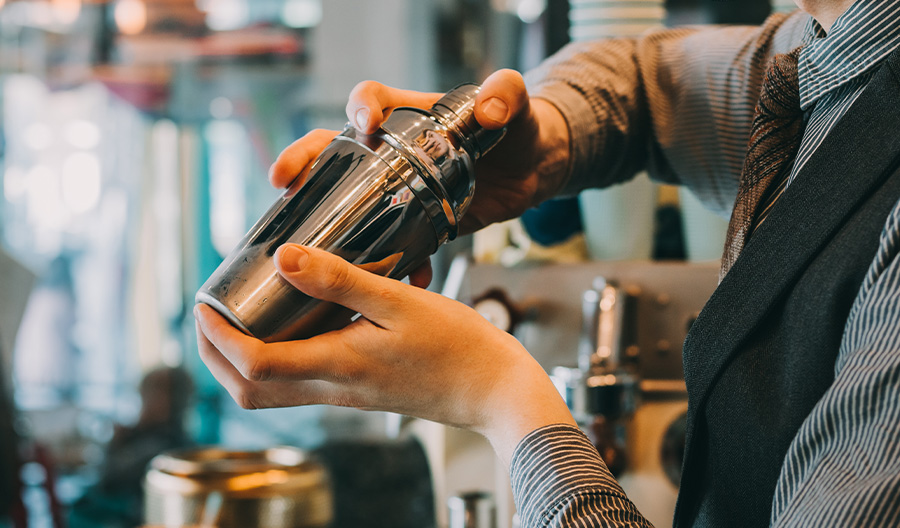Drinks iconic to the 1980s—that neon-clad era of Fuzzy Navels and Slippery Nipples—have long endured an eye-roll rep in the cocktail world, some less deserved than others. One such maligned drink is the Lemon Drop. While many have only experienced it as a cocktail shooter at a club, it has much more potential. With vodka, fresh lemon juice, orange liqueur, simple syrup and a sugared rim, the Lemon Drop is bright and crisp with a touch of sweet to balance the tart.
The original Lemon Drop cocktail was the precursor to the Fuzzy Navels and Wine Spritzers so readily enjoyed in the ’80s. The simplicity and balance of the original cocktail makes it a timeless classic that even today’s discerning consumer can enjoy, either in its original form or as a variation.
These are six things you should know about the Lemon Drop.
1. It’s Not a Martini—It’s a Crusta
You’ll often see the Lemon Drop deemed a martini, but the common choice of glassware is really the only thing martini-like about it. At its base, the cocktail is simply a Vodka Crusta. Crustas were originally brandy-based sours incorporating a sugared rim. In the ’70s, vodka was in vogue, which made it the obvious spirit of choice for the Lemon Drop. With the drink’s refreshing balance of sweet and tart, it’s a cocktail that has effortlessly spanned the decades since its inception.
2. Its Inspiration Came from the Candy Shop
If a lemon drop reminds you of the iconic hard candy of the same name, that’s because it’s exactly the place from which it drew its name. But while the life of the 18th-century confection—likely a creation for sore throats that lived in medicine cabinets—runs parallel to many of the cocktail canon’s elder members, the Lemon Drop cocktail was instead a nod to that hard-candy treat created in the 20th century.

3. It Was Born in the City by the Bay
The booze world is full of larger-than-life characters, and one of them was San Francisco’s Norman Jay Hobday. His bar Henry Africa’s is often referred to as the world’s first fern bar, warm and welcoming bars full of hanging plants and faux Tiffany lamps. Henry Africa’s stood its ground for nearly 20 years serving crisp, refreshing drinks like daiquiris, piña coladas, and Hobday’s own creation, the Lemon Drop.
4. It’s Basically a Deconstructed Sour Mix
Water, fresh citrus and sugar: These key components of the Lemon Drop are also the key components of a proper sour mix. Some versions go heavy on the citrus and light on the sweetener—3/4 ounce to 1/4 ounce, respectively—due to the addition of orange liqueur and requisite sugared rim. It's also common to add a drop of aromatic bitters, which tightens the flavors.
5. It’s Better When You Use the Good Stuff
Quality ingredients are vital in making a great cocktail. But in drinks like the Lemon Drop with a blank-slate spirit and so few modifiers, bad decisions are impossible to mask. It's recommended to avoid using premade mixes or low-quality spirits in this drink. The fewer ingredients you have in a cocktail, the more important the quality of each of those ingredients is; cheap vodka and sour mix are your worst enemies here.
6. If You’re Looking for a Shortcut, Limoncello Makes the Cut
Shortcuts in cocktails should generally be avoided, but limoncello—essentially a fruit liqueur made by infusing a neutral spirit with lemon peels and combining it with simple syrup—does work well. One of the biggest mistakes to avoid when mixing one is not making it too tart. The best way to make the Lemon Drop is to use house-made limoncello—no bottled limoncello, as it’s too syrupy. The limoncello adds the right balance of sweet and sour to make a perfectly balanced lemon drop. For those more daring, squeezing a fresh lemon into the drink and not adding anything to sweeten it creates an extra pucker.

